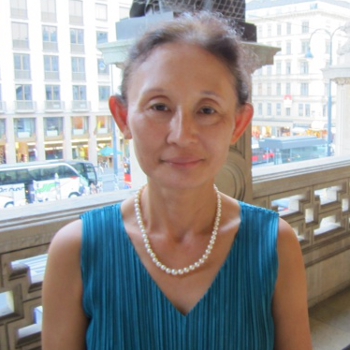Beloved since its premiere in Naples in1835, Donizetti’s Lucia di Lammermoor is an opera which centers on the fate of a young Scottish woman in the 17th century who is coerced into an arranged marriage to save her fading aristocratic family. Scorned by her beloved, a rival clan heir, she gives into despair and kills her husband on their wedding night in derangement. Director Simon Stone sees a parallel to Lucia’s story in the economically forgotten rust belt of contemporary America, where middle-class workers feel forsaken and helpless. The men resort to violence and abuse, with women often their victims. Lucia’s madness is foretold here, as she is a drug addict desperate to escape her small town with her boyfriend Edgardo. The premise of the production that Stone hopes will find audiences “exhilarated by how close their own experience, or that of their fellow Americans, can be to grand opera,” is certainly admirable. His production, unfortunately, falls short of expectations.
Lizzie Clachan's set rotates on a turntable, packed full with a dilapidated house, pharmacy, fast food joint, motel and drive-in cinema. A screen high above the stage shows video at crucial times to “provide close-up views and more than one perspective” per the Met’s program. It is distracting at best and dumbing down of the audience to have a videographer and his assistant trailing singers on stage to show Lucia in her room doodling, playing with her phone or changing, or wedding guests stuffing their faces.
As Lucia sings to her friend Alisa, in what appears to be a sewage plant, of her vision of the ghost of a slain woman, the screen shows a mortally wounded woman frantically thrashing about. The Met’s previous production featured a ghost of a young woman as well, but there she moved elegantly with the music. In the current production, the female ghost returns during Lucia’s famous Mad Scene in Act 3, this time in person, to follow Lucia. As the overhead screen shows Lucia happily embracing her beloved Edgardo in her fantasy, in keeping with the libretto, the real Lucia on stage is also besieged by several bloody zombies dressed as her bridegroom, Arturo. This scene, along with the “kitchen sink” of the Act 3 set, with all previous buildings and structures piled onto the turntable, is the nadir of a well-intended but poorly-executed production. Lucia, in her white wedding gown drenched with blood, is reminiscent of the horror film, Carrie.
Donizetti composed some of his most memorable music in this opera: a beautiful entrance aria for Lucia and a passionate duet for Lucia and Edgardo in Act 1; brilliant ensembles in Act 2, including the famous sextet; a great duet for Edgardo and Lucia’s brother Enrico, then Lucia’s Mad Scene and Edgardo’s fiendishly difficult two arias in Act 3. Conductor Riccardo Frizza maintained a firm grip on the score throughout the evening in a well-paced and balanced musical performance. The Met Orchestra was in good shape, led by splendid winds and strings. Friedrich Heinrich Kern was once again memorable playing the glass harmonica in Lucia’s Mad Scene. If only we could concentrate on the beautiful interplay of the soprano and the instrument instead of having to look at the zombies and video. The chorus, despite awkward blocking at times, enhanced the crowd scenes with excellent and powerful harmony.
As Lucia, Nadine Sierra has a voice that may be a little too dramatic and heavy for this lyric soprano role, but she executed her trills and coloraturas with aplomb and flair. Javier Camarena’s singing throughout the evening was expressive, nuanced and, above all, beautiful. As Lucia’s abusive but ultimately contrite brother Enrico, Artur Ruciński brought down the house with robust and thrilling singing. Matthew Rose’s Raimondo, pastor and advisor to the community and to Lucia, sang with authority and power, bringing the necessary balance and gravitas to the chaotic drama.
Alok Kumar as Normanno, Deborah Nansteel as Alisa and Eric Ferring as Arturo all acquitted themselves with superb singing and acting. As this was only the second of the nine-performance run, everyone will doubtless settle into more comfortable and exciting performances in time. They may even overcome and prevail upon Stone's messy, cluttered production whose premise may have been solid but is ultimately full of tired and uninspiring clichés and stereotypes.




